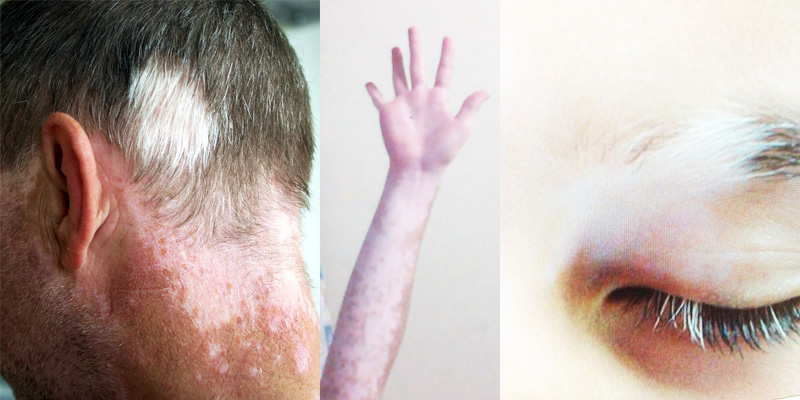
When Melanin, which gives color to your skin, eyes and hair, become unable to produce the color pigment then you suffer from Vitiligo. In fact, the pigment is created by the skin cells which are known as Melanocytes. The disease leaves white or fairly lighter spots on your hair or skin regardless to any sex or gender. Generally, the growth of the disease is difficult to predict and sometimes the patches go away without any treatment. Most probably, the loss of color spreads to all parts of the body. Also, sometimes the skin may turn into black color.
Some of the symptoms of Vitiligo
Loss of Pigment of the Skin
The major symptoms of vitiligo is loss of color or pigment that shows up white or light patches on the skin. Normally, the loss of color can be noticed while exposed to sun. Vitiligo begins from the specific areas of the body like- above your eyes, face, neck, elbows, armpits, genitalia, knees, or hands. Then, they transfer to the entire body.
One Side or Some Parts turns Milky-white
One side of your body parts starts changing into milky-white or fairly light color. This is known as segmental vitiligo. This type of vitiligo occur in young age and stops spreading within one or two years. Likewise, you will start noticing loss of pigment on a few areas of your body and this kind of vitiligo is focal or localized vitiligo.
Whitening or Graying of hair before ageing
You will start getting white or gray hair including your head hair, eyebrows, eyelashes, and beard before ageing or most often before you turn 20 years old. According to A.D.A.M. Medical Encyclopedia, in the USA one in hundred 100 people get this problem and is difficult to cure.
Discolored Tissues
You will also notice the discolored tissues lining inner part of the nose especially mucous membrane or mouth. It may turn into lighter color than normal one.
Eyeball Color Changes
The inner layer of the eyeball’s color starts changing. It may turn into fairly lighter color than normal one. Nature Genetics, a study published by researchers showed that a less percentage of people having gray or blue eyes and a more percentage of people with brown eyes have suffered from vitiligo.
Although, vitiligo has no cure consulting with your doctor for treatment may help to slow down the spreading process.